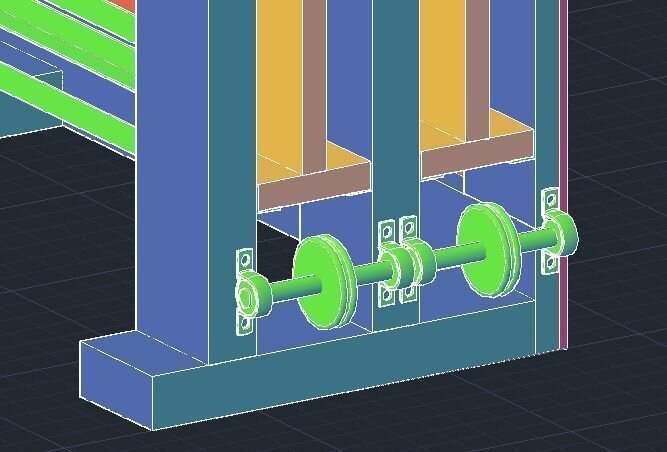Hello folks,
I will have a dilemma. (it hasn't happened yet, but it's inevitable) I'm designing the scenery for "Joseph" and due to the lack of backstage space, there are no rolling units. Instead, we have a track system which cutouts of pyramids, sphinxes, sand dunes...etc will come on and off. I am trying to fabricate a design that has dual tracks and each is motivated by a hand winch on the offstage side. Chain and any motorized elements are out of the budget. Instead, I'm trying to find a method of creating a loop of 1/8" GAC that can be tensioned. Here's my concern: The sheaves will not provide enough friction to drive 20lb cutouts with the added friction of the track. Has anyone ever attempted moving horizontal loads with aircraft cable and a single-loop system? Also, I can't afford a cable drum which would help with the friction, but the horizontal shift of the wire would throw it out of alignment with the track anyways. Attached is a small screenshot of a concept sketch which may give you a better idea of my intentions.

Thanks in advance for all your help and advice!
Nik
I will have a dilemma. (it hasn't happened yet, but it's inevitable) I'm designing the scenery for "Joseph" and due to the lack of backstage space, there are no rolling units. Instead, we have a track system which cutouts of pyramids, sphinxes, sand dunes...etc will come on and off. I am trying to fabricate a design that has dual tracks and each is motivated by a hand winch on the offstage side. Chain and any motorized elements are out of the budget. Instead, I'm trying to find a method of creating a loop of 1/8" GAC that can be tensioned. Here's my concern: The sheaves will not provide enough friction to drive 20lb cutouts with the added friction of the track. Has anyone ever attempted moving horizontal loads with aircraft cable and a single-loop system? Also, I can't afford a cable drum which would help with the friction, but the horizontal shift of the wire would throw it out of alignment with the track anyways. Attached is a small screenshot of a concept sketch which may give you a better idea of my intentions.

Thanks in advance for all your help and advice!
Nik


